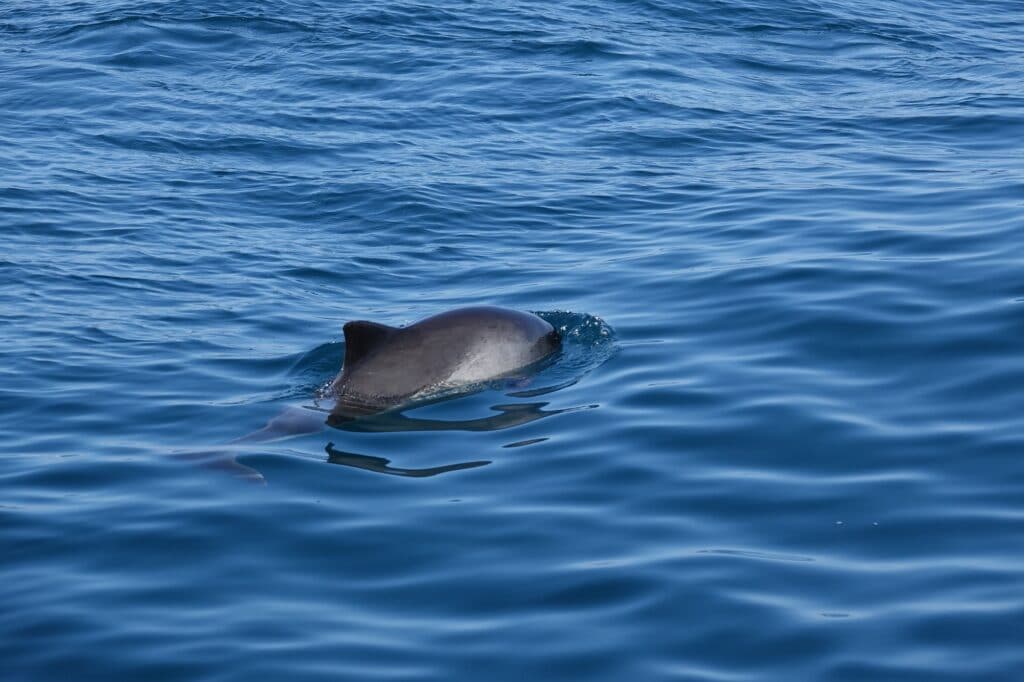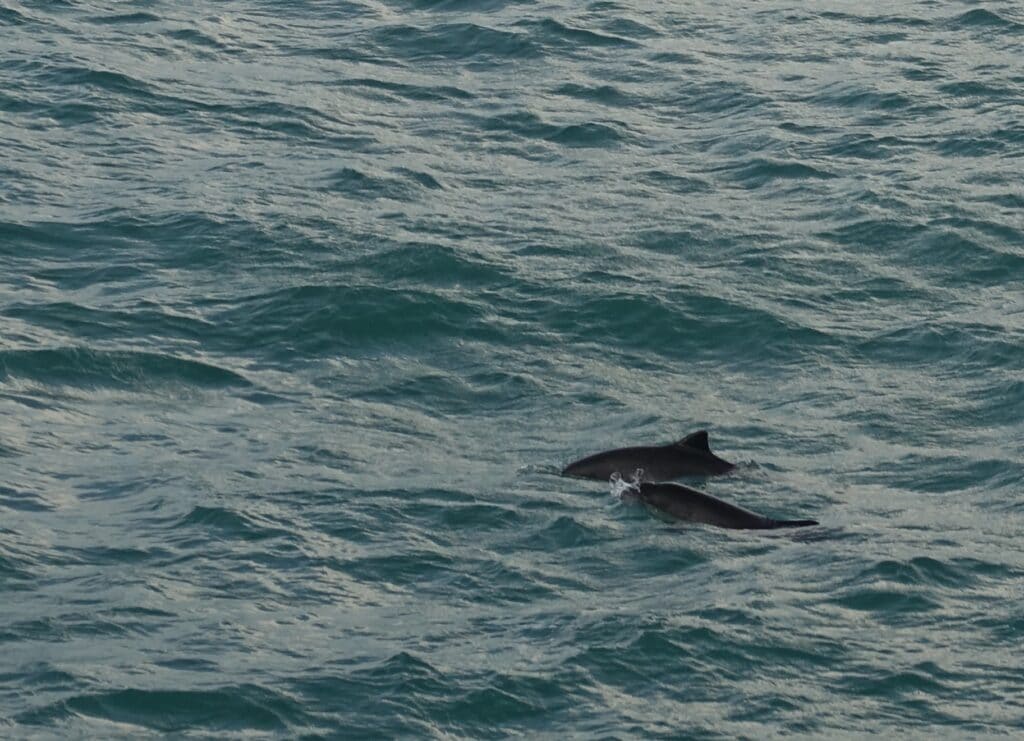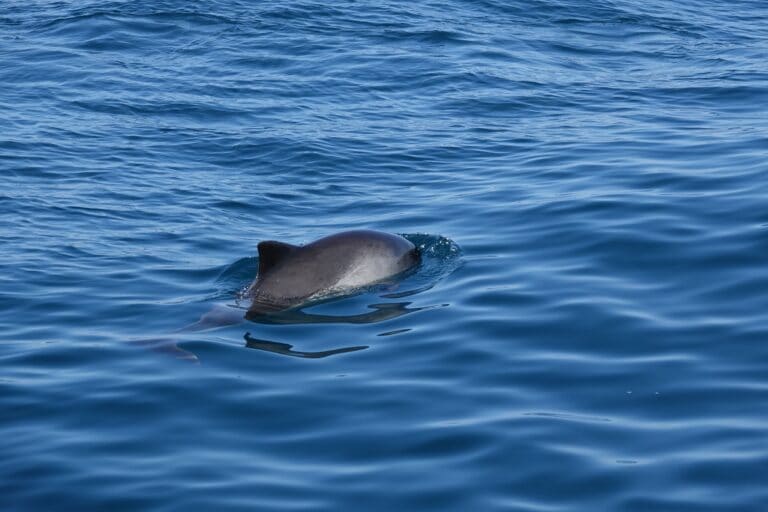Harbour porpoise – (Phocoena phocoena)

We find harbour porpoises regularly and we take them as a good omen as they are often spotted in areas we have seen baleen whales, especially near minke whales. They are one of the smallest marine mammals, being between 1.4 to 1.9metres, and are found, as the name suggests, close to land, but as well as in coastal waters they will swim up rivers in land.
Their dorsal fin is a neat triangle, and they have quite a rounded appearance without the pronounced beak of their distant cousins we often see here, the white-beaked dolphins. Because of this , and the short puffing noise it makes as it surfaces to breath out, it is often referred to across the world as a sea-pig or similar. However the word for it in Icelandic is hnísa, coming from the old nose word nise, meaning sneeze, and this comes from the same noise.
Porpoises here feed mostly on herring and capelin, normally hunting alone, although they have been observed hunting in packs occasionally. As with so many ocean species we don’t fully understand the social lives of them. Normally if they aren’t alone they are in the company of no more than 5 other animals.
They become sexually mature from about 3 years old, and the females can be pregnant and lactate simultaneously. After a 10 or 11month gestation their calves are weaned after a year. They normally live between 8 and 13 years, however there have been individuals found who reached 20.

As with all marine mammals the greatest threat to the porpoises comes from humans although porpoises are often hunted by killer whales – orca and occasionally by grey seals. Ocean noise pollution limits their communication, orientation and feeding generally, and excessive noise, such as from ships doing military testing or searching for oil reserves can deafen them permanently or cause them to panic and become stranded. Plastic pollution, and entanglement in fishing gear are also threats for this species.
Learn how to spot these amazing creatures with our guide viewable here.

